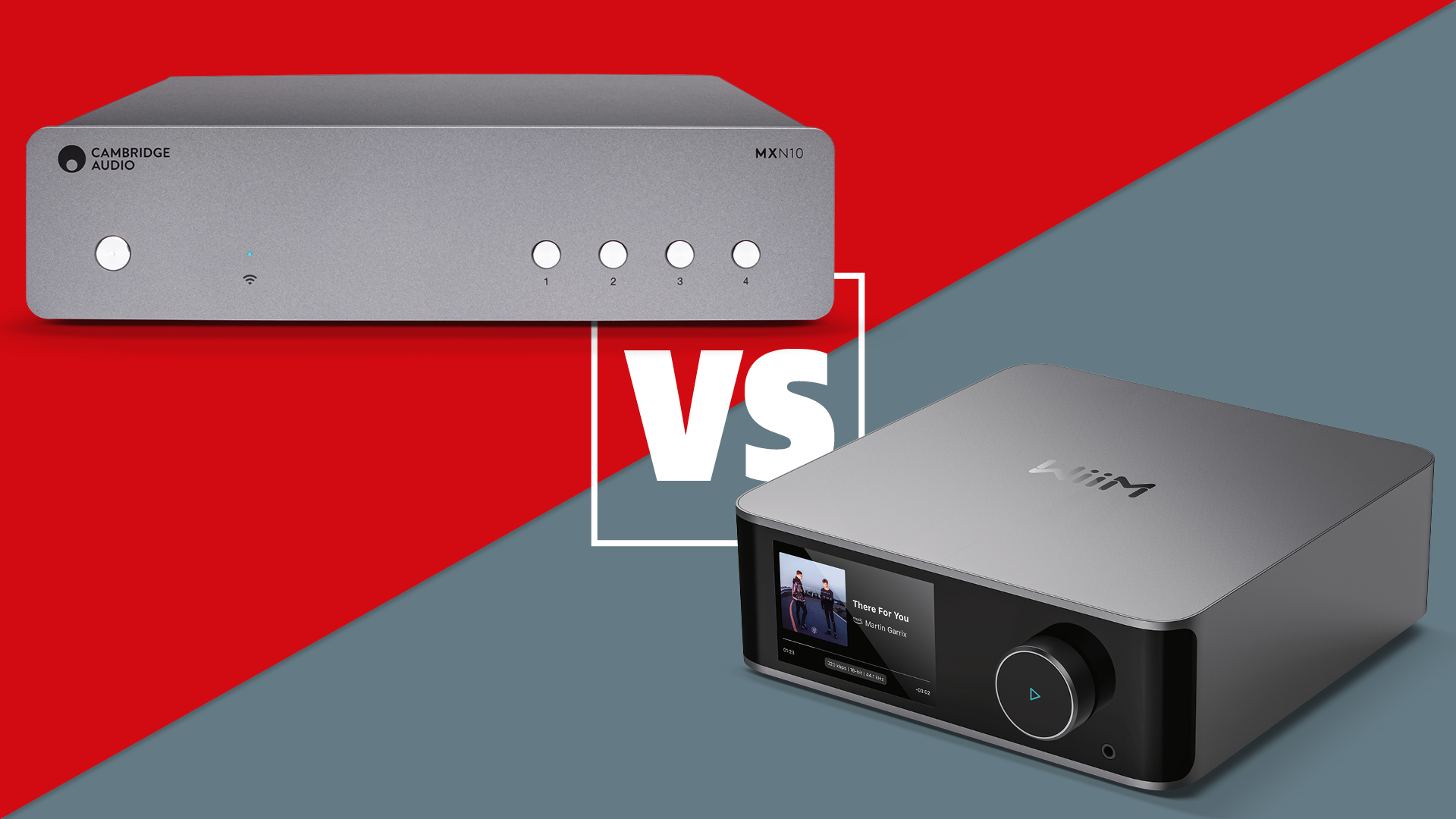The height of sophistication? It's at least 3ft above your front speakers
Been a lot of cut and thrust here in the WHFSV office in the past couple of days about the merits or otherwise of the new 'height' channel you can enjoy thanks to Dolby Pro-Logic IIz. Why? because the review moles are busy down in their burrow, rootling about among the capabilities of Onkyo's TX-SR607.
It's the first commercially-available AV receiver to have PLIIz, costs £500 and will be tested in our new-look June issue, due on the shelves of a shop near you in about three weeks.
And the discussions have all been about whether the extra front speakers are a) a good thing, b) confusing or c) just not practical in a conventional domestic environment. After all, how are you going to deploy two more speakers in front of you, given that you already have to accommodate two fronts, a centre, probably a subwoofer and a TV or a screen?
More to the point, how are you going to do it when Dolby suggests these 'height' speakers should be used at least 3ft above your main speakers, either directly or further out toward the side walls?
Wall-mount speakers such as these PMCs could be an answer
Wall-mounting seems the only option, Dolby helpfully saying that while the signal sent to these speakers can be full-band, you really can get away with relatively small speakers. In-walls, slimline on-walls, or even in-ceiling speakers would seem to offer the solution, but we all know that many of these custom-install speakers are relatively hard to fit in British homes without gutting the room, channelling walls for cables or tearing up the floorboards above your living room. Hmmm...
The suggestion is that you could use these speakers in place of the rear surrounds, as they generate the same kind of ambience, but Dolby's still talking in terms of the system offering the opportunity for 7.1-channel systems or even 9.1. So you could have your full set-up with surrounds, rear surrounds and a pair of front height channels. Best of luck getting that past the non-enthusiast partner!
Get the What Hi-Fi? Newsletter
The latest hi-fi, home cinema and tech news, reviews, buying advice and deals, direct to your inbox.
From the rival DTS camp there's talk of even more channels: the as yet unnamed system it showed at the 2009 CES in the States, referred to in passing as 'Neo;X', allows for an 11.1 speaker array. That means the usual 7.1, plus four height speakers, and I'm told it makes for a very immersive experience. As, perhaps, one might hope it would.
Yamaha does presence with extra front speakers...
...and how it extracts those extra front channels from a standard mix
Of course, we've been here before. Yamaha has been offering extra 'presence' channels on its processors and receivers for over a decade, and I remember running just such a set-up for a short while back in the VHS tape and Dolby Pro-Logic days.
And I heard a superb demonstration from Meridian, which has also been doing this height thing for a while, at an AES conference in Cambridge a couple of years back. This set-up used speakers directly above and below the listener to give both height and depth. The effect was fascinating, but somewhat tricky to achieve even in a dedicated home cinema, let alone a normal living room.
I guess the question is whether all but the most dedicated of enthusiasts will greet with open arms the idea of more channels, even if the promise from Dolby is that you won't need new discs to make the most of them.
The company reckons that while some games developers or music producers might choose to make recordings with discrete height channels – indeed, there have already been some music discs designed to give you that 'front row of the stalls, just below the orchestra' feeling – for the most part the Pro-Logic IIz software will be creating the extra channels from what's already on existing soundtracks.
In other words, just as PLIIx does when creating surround back channels from 5.1 mixes.
Do we need that 'front row of the stalls' experience, even with – for example – live classical music recordings? Well, as I noted in a column on this subject for Gramophone recently, the last time I was at the Royal Festival Hall I found myself in the front row (I hadn't chosen the tickets).
My field of vision was filled with the well-upholstered posterior of a female viola player, and my hearing dominated by the strings in the immediate vicinity, doing a fine job of psychoacoustic masking of the rest of the band.
And that's neither a visual nor an audio experience I am in any hurry to repeat.
Andrew has written about audio and video products for the past 20+ years, and been a consumer journalist for more than 30 years, starting his career on camera magazines. Andrew has contributed to titles including What Hi-Fi?, Gramophone, Jazzwise and Hi-Fi Critic, Hi-Fi News & Record Review and Hi-Fi Choice. I’ve also written for a number of non-specialist and overseas magazines.
